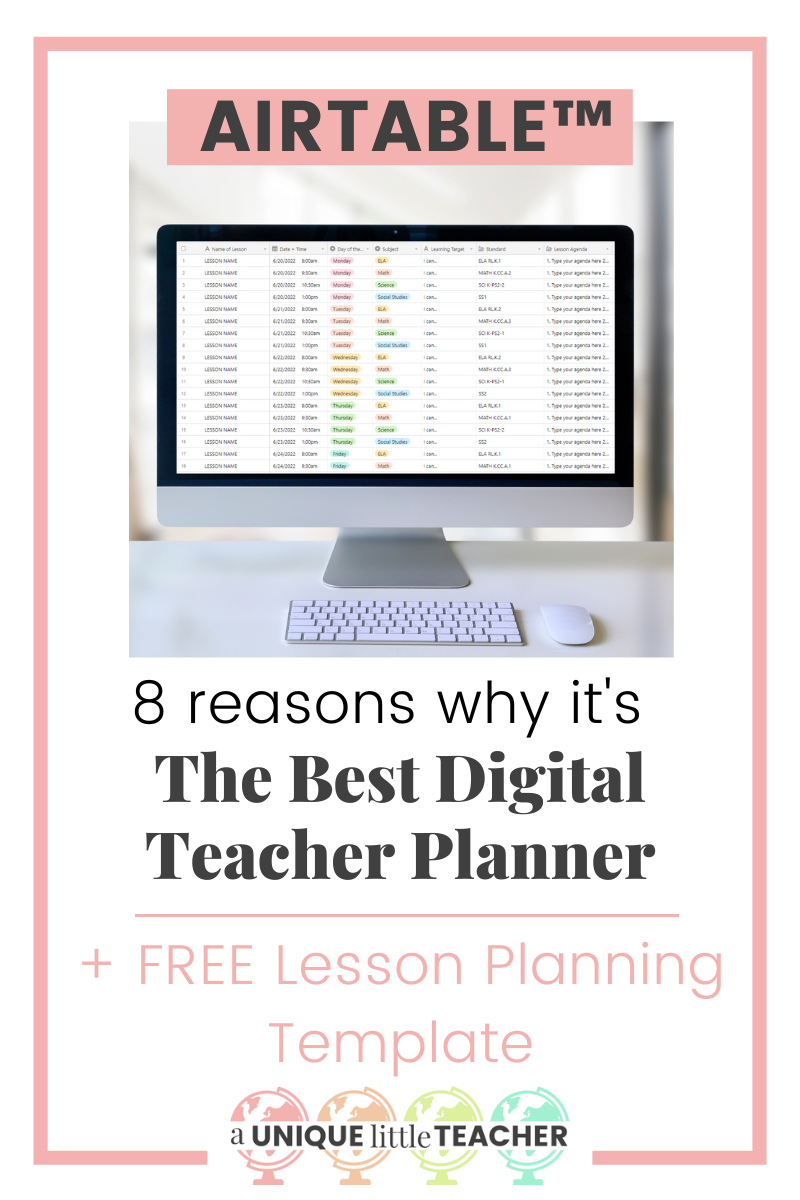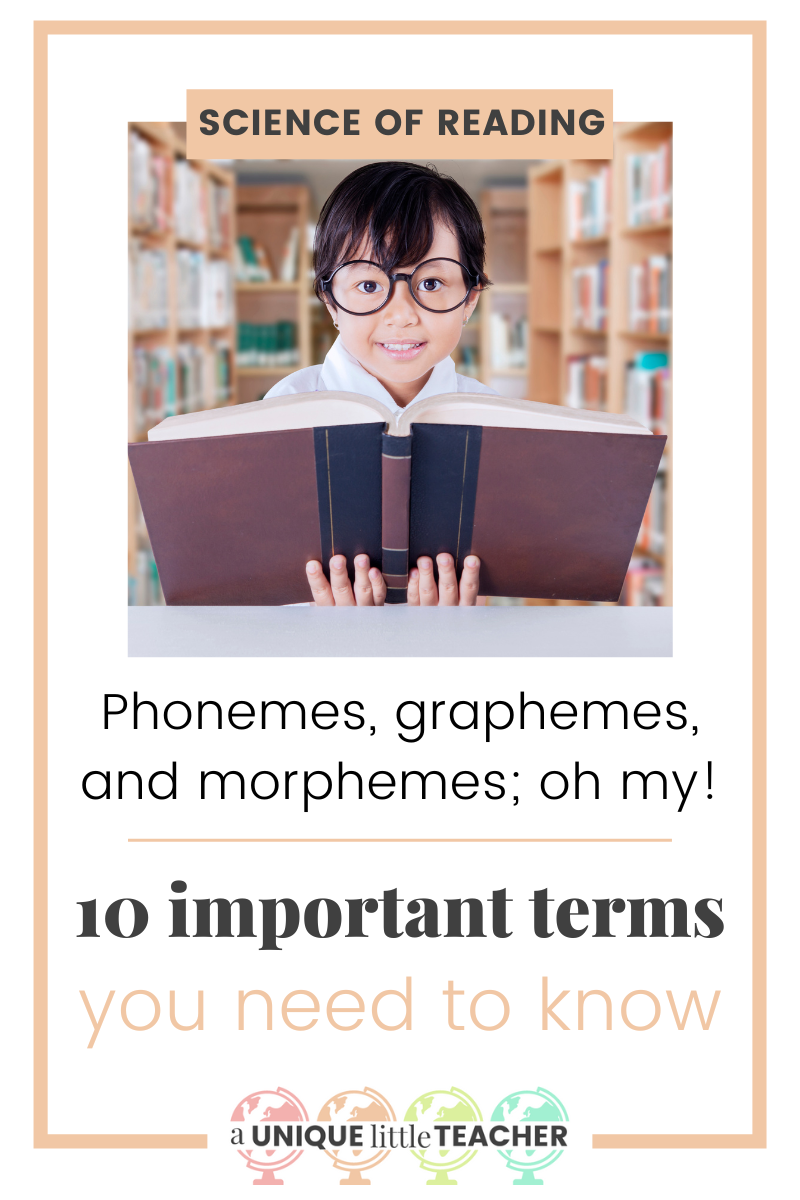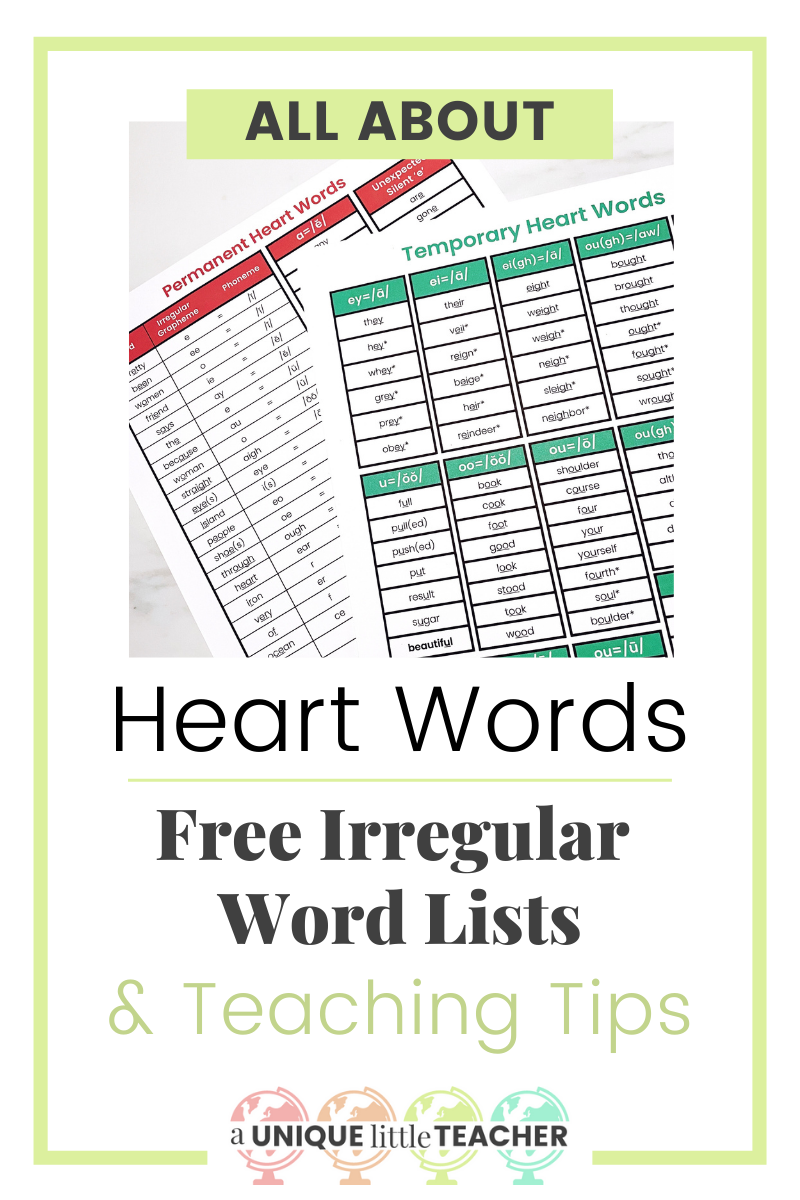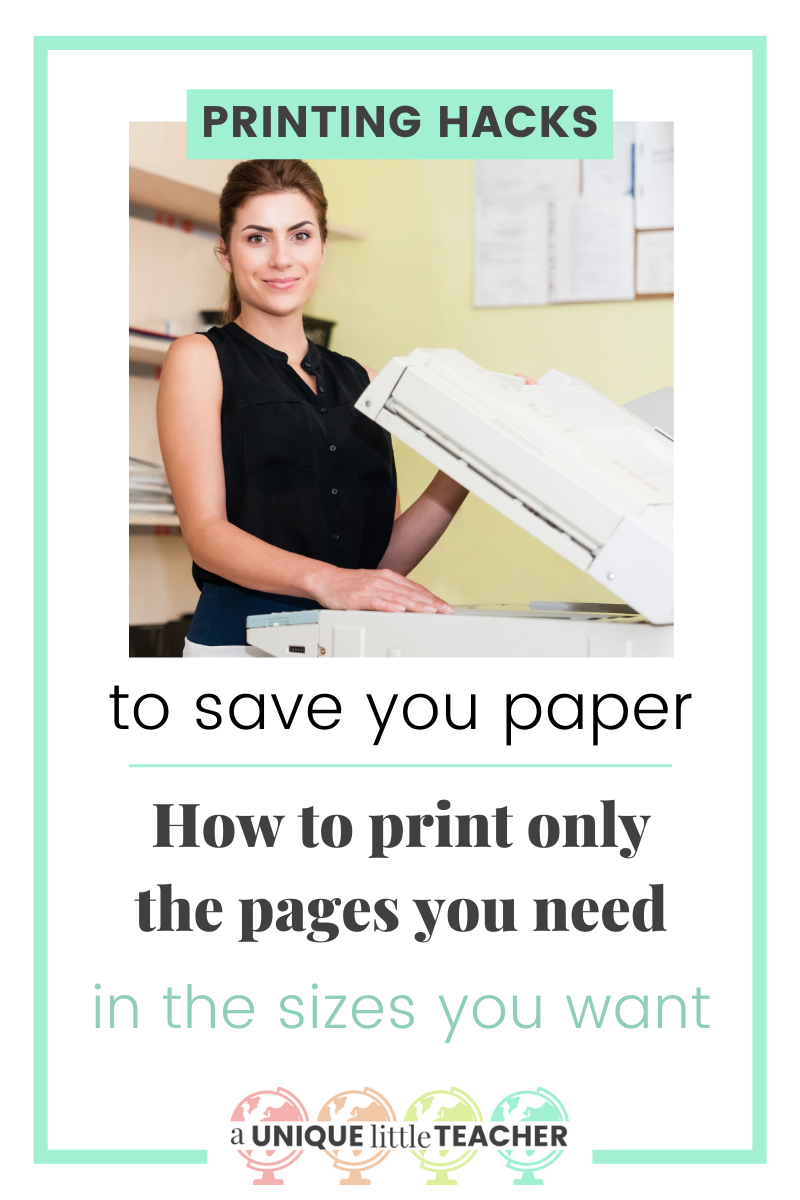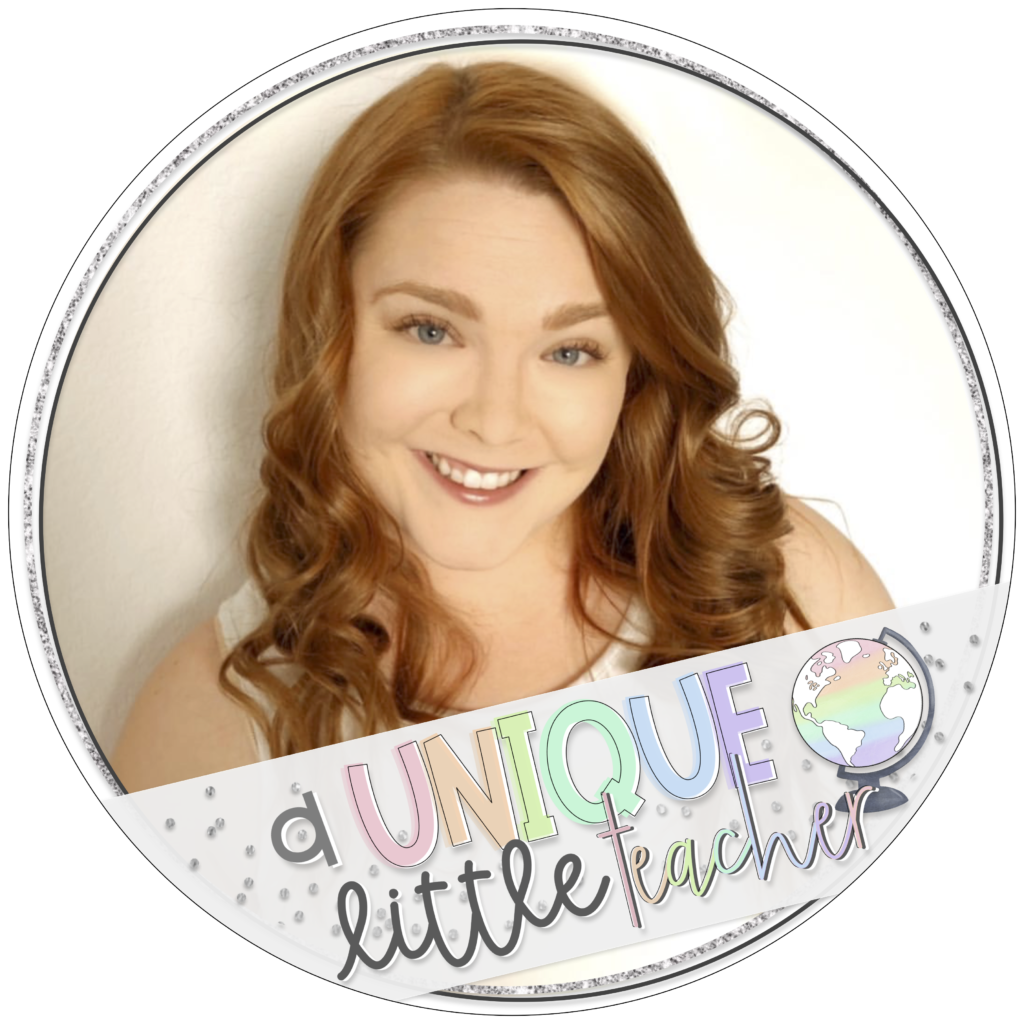What are they and how do I write them?
If you’ve spent any amount of time studying the best practices for teaching English Language Learners (ELLs), you’ve likely been told to write content and language objectives for your lesson plans. After hearing this suggestion, you may be wondering “What are content and language objectives?” “How do I write them?” and “Do I really need to write both objectives for every lesson?” Let’s get you some answers to these burning questions!
Already a content-and-language-objective-writing pro?
Grab this FREE set of Google Slides to display your Content and Language objectives digitally for your students.
What are content and language objectives?
To put it in the most simple terms, the content objective of your lesson should tell students what they are going to learn, while the language objective should tell them how. Content objectives can be written for any subject area, including ELA, math, science, or social studies. Teachers use the Common Core State Standards (CCSS) or other academic content standards to determine the content objectives for their lessons. Language objectives are usually guided by English Language Development standards and the language proficiency levels of the students in the class. They give specific information about how students will interact with the new content through listening, reading, speaking, or writing.
Do I really need to write both a content and language objective?
I hate to break it to you, but, yes. You do. That’s because content and language are never separate. No matter what age level, subject area, or population of students you are teaching, the content you are presenting will always come with its own unique language demands.
If anyone understands the fact that teachers do not need any more to-do list items added to their plates, it’s me. Writing out two different objectives for each of your lessons may sound time-consuming, but getting in the habit of intentionally planning your lessons this way and communicating these learning goals to your students will make all the difference in the long run.
Want to save time with a digital solution for planning and displaying your objectives?
But really, why?
One of the best examples I can think of is from my years as a first grade classroom teacher. I’m thinking back to math time and the lengthy worksheets that I would have to assign my students from our math curriculum. One of the concepts in math that was always the most difficult for my first-graders was solving word problems. It’s hard to think of a more demanding combination of content and language. Our first graders are expected to:
- Read the story
- Identify what the question is asking
- Decide what kinds of operations they may need to do to solve the problem, and then finally
- Express their answer and show their work
The demanding worksheets for this math concept always seemed to contain at least ten different word problems for my students to fight through. The end of the page usually presented some kind of “extension activity” that asked students to explain their problem-solving process. When asked “How did you solve this problem?” at least one student would respond with, “I used my brain.” As an added bonus, they would often include a self-portrait with a thought-bubble over their head that read, “The answer is 8” (or something of that nature).
As amusing as these responses were to read, they were also a little soul-crushing. After all of our math talks and small group guided practice, many of my students still seemed to have no idea how to explain their mathematical reasoning. I felt like I had failed my young mathematicians by not helping them fully grasp our math content standards. However, it wasn’t the content that was the issue. It was the language.
Saved by language objectives
My Math learning target (the equivalent of a content objective) for that lesson probably said something along the lines of “I can solve word problems in which I add three numbers.” After all, that’s all that my students were doing, right? Wrong. Although this nice, tidy sentence was easy to fit onto my whiteboard, it didn’t truly reflect my linguistic expectations of my students. It didn’t tell how they should go about explaining their thinking, and it didn’t give them the scaffolds they needed to be successful. Hence all the “I used my brain” responses.
I now realize that equipping our students with the precise vocabulary and language patterns they need to complete a task is essential to helping them succeed in any content area. If I were conducting that same lesson today, I would certainly add a language objective to the mix. Here are a few examples that could have applied to this math activity:
“I can…
- visually represent my thinking by drawing a math picture to match the story problem.”
- write the steps I took to solve a problem, using sentence frames for support.”
- verbally support my answer by explaining the equation I wrote.”
Keep reading to learn the ins and outs of writing content and language objectives.
How do I write a content objective?

The formula for writing a content objective is pretty straight forward. It is likely similar to learning goals that you have written for your students before. I always write my content objectives in the form of an “I can…” statement so that students have a sense of ownership over their learning. I then choose an appropriate verb from one of the six levels of Bloom’s Taxonomy and finish it off with an academic content stem that I pull straight from CCSS. They usually end up sounding something like this:
“I can justify my opinion by using facts and details.”
I often struggle to choose the most precise verbs as I am writing my lesson objectives and I got tired of googling lists of Bloom’s Taxonomy verbs every time I lesson planned, so I created by own resource to help me. You can find word lists and other tips and tricks for writing content and language objectives in this TpT resource.
How do I write a language objective?
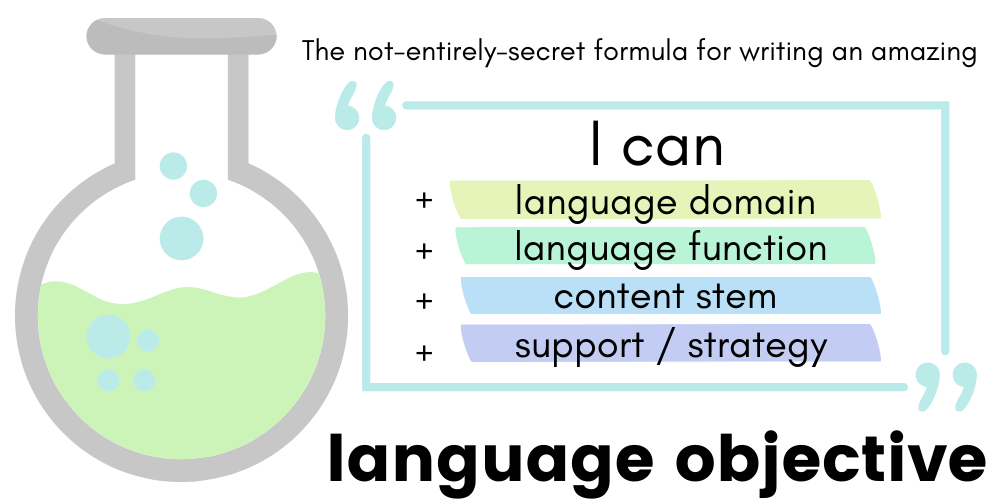
Writing a language objectives takes a few more steps than writing a content objective, but I promise you that it’s not as intimidating as it might sound! As always, start your objective with an “I can…” statement. Then decided which of the four language domains your students will be using (listening, reading, speaking, or writing). After that, you will identify the language function that you want students to practice. These are often similar to Bloom’s Taxonomy verbs. Add a content stem that you pull from your ELD standards and then choose the support or strategy that you will use to scaffold student language. You can differentiate your lesson by providing different scaffolds for students at different proficiency levels. Here’s an example:
“I can verbally defend my position to a partner, using sentence frames for support.”
You can see more examples, tips, and tricks in my Content and Language Objective Google Slides™ resource.
How should I display my content and language objectives?
When I landed by first official teaching job, I remember spending hours on Pinterest looking for pretty ways to display my learning targets and lesson objectives. I discovered and tried so many unique ways of posting them in my classroom from taping off sections of my whiteboard, hanging patterned paper in frames and using the glass as a dry-erase board, and (attempting to) print off all of the objectives I could possibly need for the entire school year in advance.
Unfortunately, none of these methods worked for me. The perfectionist in me would get too obsessive about my handwriting. I would end up having meetings before school and run out of time to change the boards before students arrived. The frames would get knocked off their hooks and break. Displaying my objectives in this way led to a whole lot of wasted time and energy. Eventually, it got to the point where I stopped posting my objectives unless I knew I had a formal observation that day. I would address them with students at the beginning of the lesson with my administrator in the room, and the process ended up meaning literally nothing to my young learners.
So what did you do?
When I entered my position as a small-group ELD interventionist, I knew I needed a better way. Having to plan, write, and post at least two objectives for twelve different groups of students every single day sounded so daunting. There was also no way that my tiny room in the corner of the library had space to display all of these objective statements. So, I turned to digital. Let me tell you–it was a game. changer.
Now, when I sit down to lesson plan—whether that’s in my classroom, at my home office desktop, or on my couch—I always have access to my content and language objectives in my Google Drive™. They are quick to update, easy for my students to read on our projector, and make me happy to look at because, you know, rainbow. 🙂
You can get your own digital content and language objectives slides to use in Google Slides™ or PowerPoint™ by clicking on any of the images below.




Any questions?
I know this blog post covered a lot of information about content and language objectives. If you still have more burning questions about this practice, leave them in the comments or connect with me on social media. I’m here to help!


